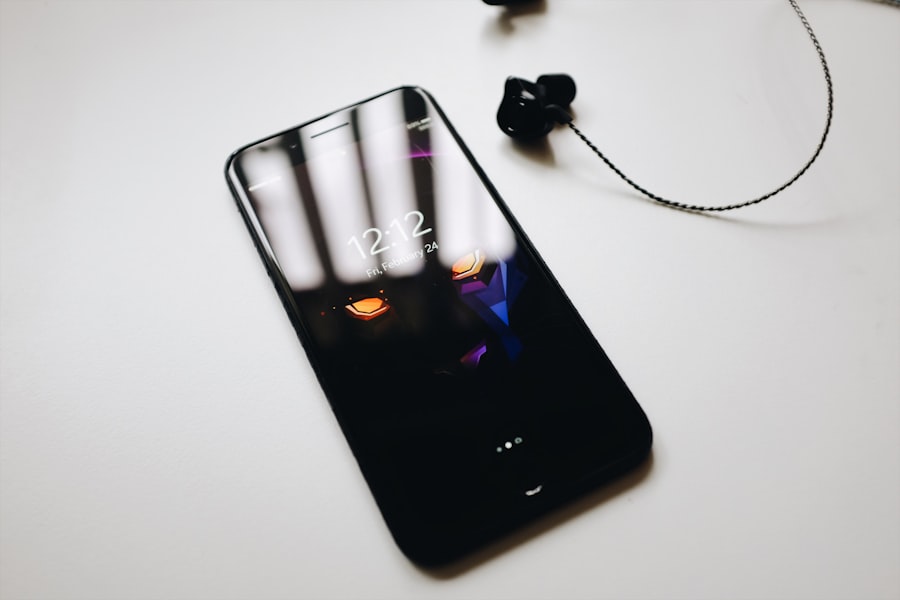Screen mirroring is a technology that allows users to replicate the display of one device onto another, typically from a mobile device to a larger screen such as a television. This functionality is particularly popular among smartphone users who wish to share content, whether it be videos, photos, or presentations, with a larger audience. The process involves transmitting the visual and audio output from the source device to the receiving device in real-time, creating a seamless viewing experience.
Screen mirroring can be achieved through various protocols and technologies, including Miracast, AirPlay, and Chromecast, each offering unique features and compatibility options. The appeal of screen mirroring lies in its versatility. For instance, it enables users to showcase their favorite movies or TV shows on a big screen, enhancing the viewing experience significantly.
Additionally, it serves as an excellent tool for business presentations, allowing professionals to display slideshows or documents directly from their smartphones or tablets. The technology has evolved over the years, becoming more user-friendly and accessible, making it an essential feature for many modern devices. Understanding the nuances of screen mirroring can greatly enhance how individuals interact with their devices and share content with others.
Key Takeaways
- Screen mirroring allows you to display your phone’s screen on a larger device such as a TV.
- Check the compatibility of your devices and ensure they support screen mirroring.
- To connect an iPhone to a Samsung TV, use the built-in AirPlay feature on the TV and the Control Center on the iPhone.
- AirPlay is a convenient way to mirror your iPhone screen to a Samsung TV without the need for additional apps.
- If your devices do not support built-in screen mirroring, consider using a third-party app for screen mirroring.
Checking Compatibility
Before attempting to connect an iPhone to a Samsung TV for screen mirroring, it is crucial to check the compatibility of both devices. Not all televisions support screen mirroring, and even among those that do, the methods of connection can vary. Samsung TVs typically support several protocols, including Miracast and AirPlay, but it is essential to verify that your specific model is equipped with these features.
Users can usually find this information in the TV’s user manual or by checking the settings menu under network or connection options. For iPhone users, compatibility is generally less of an issue since Apple devices are designed to work seamlessly with AirPlay. However, it is important to ensure that the iPhone is running a compatible version of iOS that supports screen mirroring.
Additionally, both devices should be connected to the same Wi-Fi network to facilitate a successful connection. This requirement is often overlooked but is critical for establishing a stable link between the iPhone and the Samsung TV. By confirming compatibility beforehand, users can save time and avoid frustration during the setup process.
Connecting iPhone to Samsung TV

Connecting an iPhone to a Samsung TV for screen mirroring can be accomplished through several straightforward steps. First, ensure that both devices are powered on and connected to the same Wi-Fi network. On the Samsung TV, navigate to the settings menu and look for options related to screen mirroring or Smart View.
This will prepare the TV to receive signals from the iPhone. Once this is set up, grab your iPhone and swipe down from the top-right corner of the screen to access the Control Center. In the Control Center, tap on “Screen Mirroring” or “AirPlay.” A list of available devices will appear, including your Samsung TV.
Select your TV from this list, and if prompted, enter any necessary codes displayed on the TV screen. Once connected, your iPhone’s display will be mirrored on the Samsung TV, allowing you to enjoy your content on a larger screen. This process is generally quick and intuitive, making it accessible even for those who may not be tech-savvy.
Using AirPlay for Screen Mirroring
| Metrics | Data |
|---|---|
| Number of devices supporting AirPlay | 1000+ |
| Quality of screen mirroring | High definition |
| Latency | Low |
| Compatibility | iOS and macOS devices |
AirPlay is Apple’s proprietary technology that allows users to stream content wirelessly from their iPhones to compatible devices like Samsung TVs. To utilize AirPlay for screen mirroring, ensure that your Samsung TV supports AirPlay 2, which is available on many newer models. The first step involves confirming that both your iPhone and Samsung TV are connected to the same Wi-Fi network.
Once this is established, open the Control Center on your iPhone by swiping down from the top-right corner. In the Control Center, tap on “Screen Mirroring,” where you will see a list of available devices. Select your Samsung TV from this list.
If prompted for a code, enter it as displayed on your TV screen. After a successful connection, your iPhone’s display will appear on the television. This method not only allows for mirroring but also supports streaming specific content from apps like YouTube or Netflix directly to your TV without needing to mirror your entire screen.
AirPlay enhances user experience by providing high-quality video and audio transmission while maintaining ease of use.
Using a Third-Party App for Screen Mirroring
While AirPlay offers a robust solution for screen mirroring from an iPhone to a Samsung TV, there are also third-party applications available that can facilitate this process. Apps such as ApowerMirror, LetsView, and AllCast provide additional features and flexibility for users who may encounter limitations with built-in options. These applications often come with user-friendly interfaces that guide users through the connection process step-by-step.
To use a third-party app for screen mirroring, first download and install the chosen application on both your iPhone and Samsung TV (if applicable). Once installed, ensure both devices are connected to the same Wi-Fi network. Open the app on both devices; typically, you will find an option to connect or search for devices within the app interface.
Follow the prompts to establish a connection between your iPhone and Samsung TV. Many of these apps also offer additional functionalities such as file sharing and remote control features, enhancing their utility beyond simple mirroring.
Troubleshooting Common Issues

Despite its convenience, users may encounter various issues when attempting to mirror their iPhone screens to a Samsung TV. One common problem is connectivity failure; if the devices do not recognize each other or fail to connect, it may be due to network issues or incorrect settings. First, ensure that both devices are indeed connected to the same Wi-Fi network; sometimes, devices may inadvertently connect to different networks or switch between 2.4GHz and 5GHz bands.
Another frequent issue involves lag or poor quality during mirroring sessions. This can stem from several factors including network congestion or interference from other devices. To mitigate these problems, consider reducing the number of devices connected to your Wi-Fi network during mirroring sessions or moving closer to the router for a stronger signal.
If problems persist, restarting both devices can often resolve temporary glitches that may be affecting connectivity.
Optimizing Screen Mirroring Quality
To achieve optimal quality during screen mirroring sessions between an iPhone and a Samsung TV, several factors should be considered. First and foremost is ensuring a strong Wi-Fi connection; using a dual-band router can help maintain high speeds by allowing devices to connect over less congested frequencies. Additionally, minimizing physical obstructions between the router and devices can enhance signal strength and reduce lag.
Another aspect of optimizing screen mirroring quality involves adjusting settings on both devices. On your Samsung TV, check for any picture settings that may enhance display quality during mirroring sessions; options such as picture mode adjustments can make a significant difference in visual clarity. On your iPhone, ensure that background applications are closed to free up processing power for smoother performance during mirroring sessions.
By taking these steps, users can enjoy a more seamless and visually appealing experience when sharing content on larger screens.
Exploring Additional Features
Beyond basic screen mirroring capabilities, many modern TVs and smartphones offer additional features that enhance user experience. For instance, some Samsung TVs come equipped with Smart View technology that allows users not only to mirror their screens but also to control playback directly from their mobile devices. This means users can pause or skip content without needing to use their remote control.
Moreover, certain third-party apps provide advanced functionalities such as recording mirrored content or streaming gameplay directly from mobile games onto larger screens. These features can be particularly appealing for gamers looking to showcase their skills or for educators wanting to present interactive lessons in real-time. Exploring these additional features can significantly enrich how users interact with their devices and share content with others.
Securing Your Screen Mirroring Connection
As with any wireless technology, security is an important consideration when using screen mirroring features between an iPhone and a Samsung TV. Unauthorized access can lead to privacy breaches or unwanted interruptions during presentations or viewing sessions. To secure your connection, always ensure that your Wi-Fi network is password-protected and consider changing your Wi-Fi password regularly.
Additionally, many modern TVs offer security settings that allow users to restrict access to screen mirroring features. For instance, you can set up a PIN code that must be entered before any device can connect via screen mirroring. This adds an extra layer of security by ensuring that only authorized devices can access your television’s display capabilities.
By taking these precautions, users can enjoy screen mirroring with greater peace of mind.
Exploring Screen Mirroring Alternatives
While screen mirroring offers numerous advantages for sharing content between an iPhone and a Samsung TV, there are alternative methods worth considering depending on user needs and preferences. One popular alternative is using HDMI cables for direct connections; this method provides high-quality video and audio without relying on wireless networks but does require physical proximity between devices. Another alternative involves using streaming devices such as Roku or Amazon Fire Stick that support various casting protocols including AirPlay and Miracast.
These devices often come with their own set of apps and features that enhance streaming capabilities beyond simple mirroring functions. Users may also explore cloud-based solutions where content can be uploaded and accessed via smart TVs without needing direct connections at all.
Conclusion and Final Tips
In navigating the world of screen mirroring between an iPhone and a Samsung TV, understanding compatibility and connection methods is essential for maximizing user experience. By leveraging technologies like AirPlay or third-party applications while being mindful of security measures and troubleshooting common issues, users can create an efficient setup tailored to their needs. Additionally, exploring alternative methods such as HDMI connections or streaming devices can further enhance how content is shared across platforms.
For those looking to optimize their experience even further, consider investing in high-quality routers that support faster speeds and better connectivity options tailored for streaming purposes. Regularly updating device software ensures access to new features and improvements in performance as well. Ultimately, embracing these technologies opens up new avenues for entertainment and productivity in our increasingly digital lives.
If you are looking to learn more about iPhone features and capabilities, you may want to check out the article on getiphoneinfo.com. This website provides detailed information about various iPhone functions, including how to screen mirror your iPhone to a Samsung TV. By understanding the capabilities of your iPhone, you can make the most out of your device and enhance your overall user experience.
FAQs
What is screen mirroring?
Screen mirroring is a technology that allows you to replicate the display of your smartphone, tablet, or computer on a separate screen, such as a TV or monitor.
Can I screen mirror my iPhone to a Samsung TV?
Yes, you can screen mirror your iPhone to a Samsung TV using a feature called AirPlay. This feature allows you to wirelessly stream content from your iPhone to the Samsung TV.
How do I screen mirror my iPhone to a Samsung TV using AirPlay?
To screen mirror your iPhone to a Samsung TV using AirPlay, make sure your iPhone and Samsung TV are connected to the same Wi-Fi network. Then, open the Control Center on your iPhone, tap on “Screen Mirroring,” and select your Samsung TV from the list of available devices.
Do all Samsung TVs support AirPlay for screen mirroring with an iPhone?
No, not all Samsung TVs support AirPlay for screen mirroring with an iPhone. AirPlay is supported on Samsung Smart TVs from 2018 and later models.
Are there any alternative methods to screen mirror an iPhone to a Samsung TV?
Yes, there are alternative methods to screen mirror an iPhone to a Samsung TV, such as using a third-party app or a physical adapter that connects your iPhone to the TV. However, using AirPlay is the most seamless and integrated method for screen mirroring with a Samsung TV.










